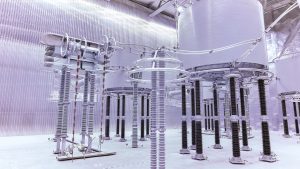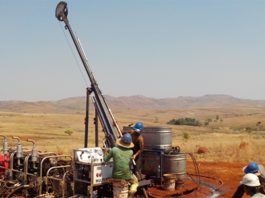With substantial funding of over €11m, the SHIFT to Direct Current (SHIFT2DC) project aims to create smarter, more efficient, and environmentally friendly energy infrastructures through direct current (DC) solutions.
The SHIFT2DC project initiative is led by the Portuguese Research & Innovation Institute INESC-ID in collaboration with 32 other partner institutions from 13 institutions across Europe. The Kickoff Meeting was held in Lisbon in December 2023.
The project aims to transform how DC solutions are used in our power systems. To do so, the consortia will establish comprehensive guidelines and a roadmap for the widespread application of DC in diverse energy scenarios.
The benefits of direct current solutions
Hugo Morais from INESC-ID, the Project Coordinator, said that DC can offer significant advantages when compared to AC solutions in specific situations.
He explained: “Throughout the SHIFT2DC project, we will evaluate DC solutions in four applications: data centres, ports, industry, and buildings. In these contexts, specific DC technologies and tools will be implemented.
“A comprehensive cost-benefit analysis will be conducted for each application, enabling the assessment of the proposed solutions’ advantages.
“The activities within the project will also contribute to standardisation, harmonisation, and the proposal of guidelines for adopting DC solutions.”

The SHIFT2DC project will implement a top-down, application-agnostic approach to design, simulate, test, validate, and apply DC solutions at both medium (MV) and low voltage (LV) levels.
To guarantee the promotion of greener energy alternatives, the consortium will conduct thorough analyses, including feasibility, cost-benefit, life cycle, and environmental impact assessments. This will ensure that the proposed DC solutions are practical, cost-effective, and sustainable.
Over the course of the project, three field-test demonstration sites will be implemented: two DC living labs and one digital twin demonstrator centred on testing solutions for data Centres, buildings, industry and ports.
“This real-world testing and validation are among the most exciting aspects of SHIFT2DC,” said Morais.
“The project will have four demonstrators, two across Germany (Datacenter and Industry), one in France (Building), and one in Portugal (Port) to test medium voltage DC (MVDC) and Low Voltage DC (LVDC) solutions. This will allow us to assess the best methodologies and tools to find the most promising solutions for both MVDC and LVDC systems.
“In each demo, the project will showcase the advantages of DC solutions when compared to traditional AC ones.”
The SHIFT2DC project will develop user-friendly tools for DC applications
The SHIFT2DC project will also focus on developing user-friendly tools to simplify the adoption of DC solutions, including Sustainable and smart DC cables developed for DC installations, micro solar DC systems, LVDC measurement devices, pre-charging units for DC circuit breakers, and high-density power sources.
Morais stated: “These tools will showcase the adequacy of DC solutions, enhance confidence in their use and in planning systems based on DC.
“Our main goal is to create a greener and smarter energy landscape for the benefit of communities and industries and to be used worldwide using effective DC solutions.”
Funded through the Horizon Europe Programme, the SHIFT2DC project is planned for 42 months, bringing together a group of 33 partners from 13 European Countries, including 21 beneficiary partners, six affiliated entities, and six associated partners.









